Mānuka honey is a monofloral honey produced in New Zealand from the nectar of the mānuka tree. The honey is commonly sold as an alternative medicine. While a component found in mānuka honey has antibacterial properties in vitro.
Mānuka honey is produced by introduced European honey bees (Apis mellifera) foraging on the mānuka or tea tree (Leptospermum scoparium) which grows uncultivated throughout New Zealand and southeastern Australia.
Mānuka honey is markedly viscous, having the highest viscosity among a range of honeys. This property is due to the presence of a protein or colloid and is its main visually defining character, along with its typical dark cream to dark brown colour. To be labelled New Zealand mānuka honey, at least 70% of its pollen content should come from Leptospermum scoparium.
The mānuka tree flowers at the same time as Kunzea ericoides, another Myrtaceae species also called kānuka, which often shares the same growing areas. Some apiaristscannot readily differentiate these species, as both flowers have similar morphology and pollen differentiation between the two species is difficult. Therefore, melissopalynology as identification for the type of honey is valid only in association with other identification tests. In particular, L. scoparium honey is dark, whereas K. ericoides honey is pale yellow and clear, with a “delicate, sweet, slightly aromatic” aroma and a “sweet, slightly aromatic” flavour, and is not viscous.[4]
Heather (Calluna vulgaris) honey is also viscous, but the plant flowers in late summer and its mountain distribution in north temperate Europe and central Asia does not correspond with that of Leptospermum scoparium. Therefore, its harvest cannot be mistaken for that of manuka honey.

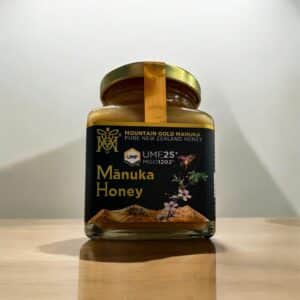 UMF® 25+ (MGO 1202+) Manuka Honey 250g
UMF® 25+ (MGO 1202+) Manuka Honey 250g
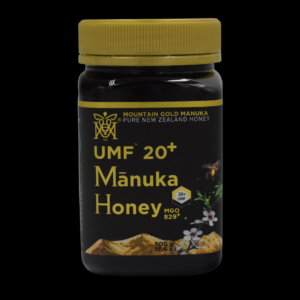 UMF® 20+ (MGO 829+) Manuka Honey 500g
UMF® 20+ (MGO 829+) Manuka Honey 500g
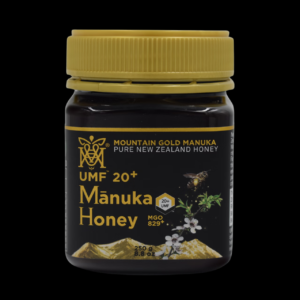 UMF® 20+ (MGO 829+) Manuka Honey 250g
UMF® 20+ (MGO 829+) Manuka Honey 250g
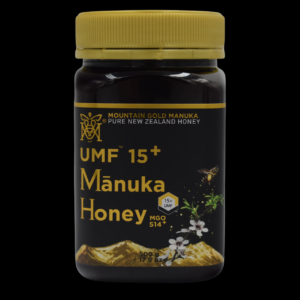 UMF® 15+ (MGO 514+) Manuka Honey 500g
UMF® 15+ (MGO 514+) Manuka Honey 500g
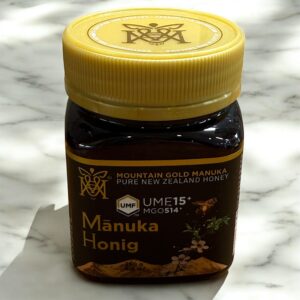 UMF® 15+ (MGO 514+) Manuka Honey 250g
UMF® 15+ (MGO 514+) Manuka Honey 250g